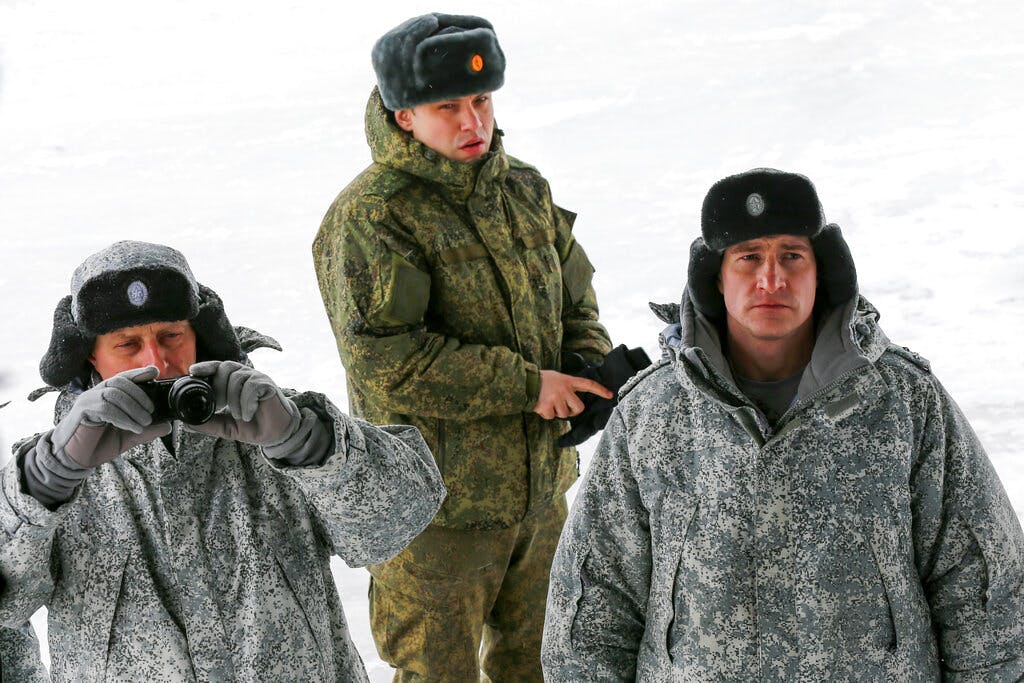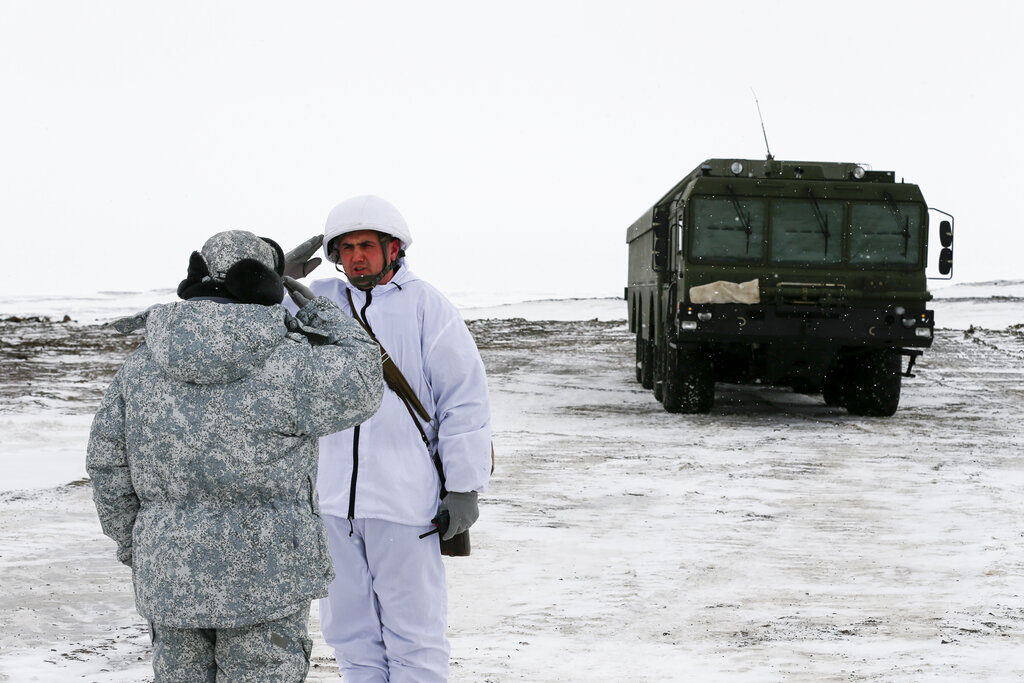Echoing Trump’s Offer To Buy Greenland, America Quietly Doubles Its Claim to Arctic Seabed
While Russians are distracted by Ukraine, America claims an area twice the size of California.

Lost in the Christmas rush, America quietly expanded its claim to the Arctic seabed by an extra 200,000 square miles, an area twice the size of California. Russians, who celebrate Christmas next Sunday, did not miss Washington’s move. They denounced it as a “seizure.”
The vice speaker of the Federation Council, Konstantin Kosachev, objects on his Telegram channel: “Today, the Americans act without any international legal basis at all, which means the international community has every right not to recognize new borders.”
The Historical Perspective Foundation, a conservative Moscow think tank run by a Duma member, Natalia Alekseevna Narochnitskaya, warns: “Washington’s biggest appetites are in the Bering Sea and the Arctic.” After losing half of its army and much of its navy in Ukraine, the Kremlin is in no position to open up a second front with America. For now, Russia limits its aggressive Arctic claims to the United Nations, where America, Communist China, France, and Britain have, along with Russia, a veto.
At stake are more than national egos. The Arctic is the fastest warming part of the planet. Within 25 years, ice-free summers could be regular occurrences. At the top of the world, fights over seabed rights will not affect use of “the water column” — fishing and shipping. Yet below the sea bed, the Arctic offers gas and oil for the old economy and rare earths for the new economy of electric cars and solar panels.

15 years ago, America’s Geological Survey estimated that within the Arctic Circle, there are critical minerals, 90 billion barrels of oil, and 1.67 quadrillion cubic feet of gas. However, this survey relied largely on projections from land data. With the exception of gas production in the Russian Arctic, offshore seabed deposits are largely unexplored.
“The continental shelf contains nodules rich in strategic minerals and rare earth elements needed for everything from green energy to the semiconductors that drive Artificial Intelligence,” a professor of International Maritime Law at America’s Naval War College, James Kraska, wrote last month in an article for the Wilson Center.
“The US continental shelf,” he wrote, “has some 50 hard minerals required for the New Economy. These minerals are used in everything from cell phones to satellites, including lithium for electric batteries and tellurium used in solar panels. Military systems are especially dependent on hard minerals — like titanium, cobalt, and gallium — found on the continental shelf.”
Preparing for a mineral rush, four nations are positioning themselves: Russia, Canada, America, and Denmark, on behalf of its territory, Greenland. Though claims overlap, all four countries say they follow rules set under the 1982 United Nations Convention on the Law of the Sea.
“Data collection began in 2003 and constitutes the largest offshore mapping effort ever conducted by the United States,” the State Department says in its press release last month, justifying the expanded American claim. America has signed the Law of the Sea but has not ratified it. It does not have a representative on the Commission that will decide the competing claims.
Russia, which is party to the Treaty, has worked closely with the United Nations to win world recognition of its Arctic seabed claims. “If the [UN] Commission fully decides in Moscow’s favor, Russia will be able to claim sovereignty over 1.2 million square kilometers of Arctic sea shelf that extends more than 350 nautical miles from the shore,” the Norwegian news site Barents Observer writes in an article headlined: “Assertive Moscow outlines push into central Arctic Ocean.” Based on Russia’s interpretations of its continental shelf, this would be about the size of Canada’s claim and almost three times the American claim.
President Putin has long shown an interest in Russia’s Arctic, visiting the region annually. At his behest in 2007, a Russian submarine planted in the seabed a three-foot-tall Russian flag, made of titanium. It’s 14,000 feet below the ice of the North Pole. Russia’s new “Marine Doctrine” mentions the Arctic 66 times. The 2001 version mentioned the Arctic 11 times.
Here as elsewhere, Mr. Putin operates on a two-track strategy. Should multilateral agreements fail him, he reserves the right to work in tandem with China, a country that declares itself a “near-Arctic” nation. In a foreign policy document signed by Russia’s president last March, the Arctic section was stripped of references to “constructive international cooperation.” In an apparent reference to China, Russia vows to work closely with non-Arctic states “pursuing a constructive policy towards Russia.”
Today’s great power jousting over the Arctic recalls President Trump’s efforts four years ago to buy Greenland from Denmark and from Greenland’s 57,000 inhabitants. Mr. Trump’s interest in taking over the world’s largest island grew after Australian geologist Greg Barnes sketched out the island’s rare earths potential in a July 2019 briefing with 20 administration officials at the White House.
Washington officials also were concerned about growing ties between Greenland and China, the largest foreign investor in the massive island. Shenge Resources had started to mine zinc, uranium, and rare earths. Other Chinese companies wanted to buy an abandoned naval base and upgrade two airports in Greenland.
What could have been the modern world’s largest real estate deal would not have come cheap for America. In 1917, America bought the Virgin Islands from Denmark for $25 million in gold — about half a billion current dollars. For comparison, in 1867, America paid Russia $7.2 million, the current equivalent of $125 million, for Alaska, a land area 26 percent smaller than Greenland.
This time around, Danish and Greenlandic officials rejected Washington’s offer. However, they made clear their preference for retaining close defense ties with America. The blizzard of headlines boosted international tourism. Some grateful residents posted on social media: MaGGA — “Make Greenland Great Again.”

